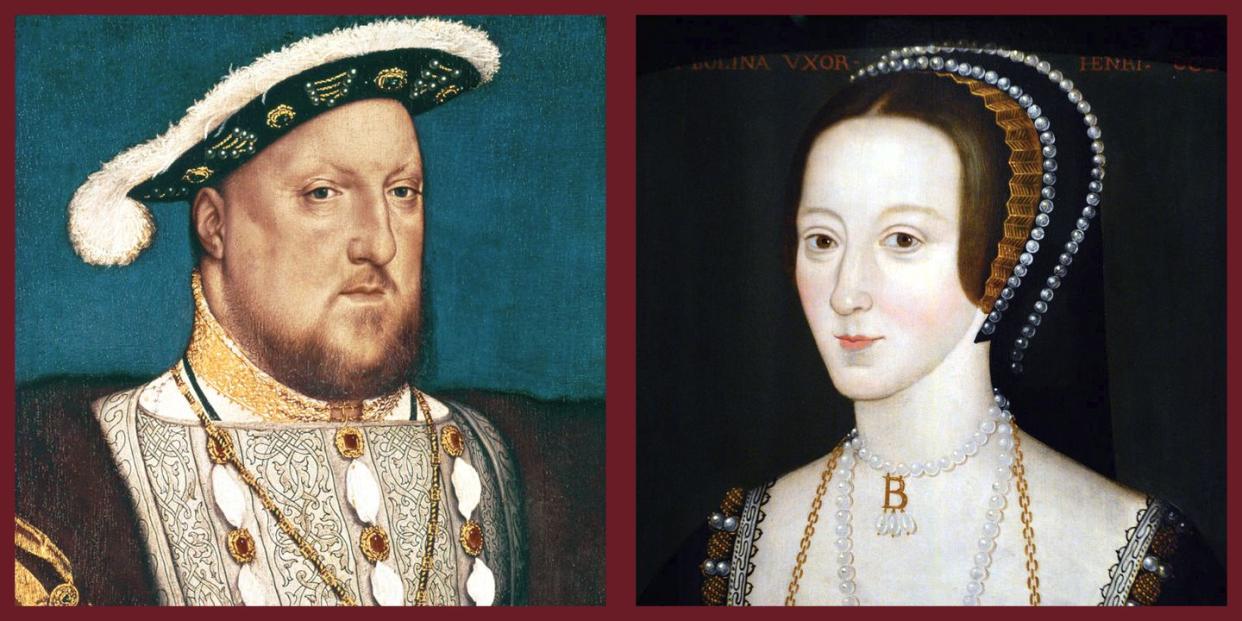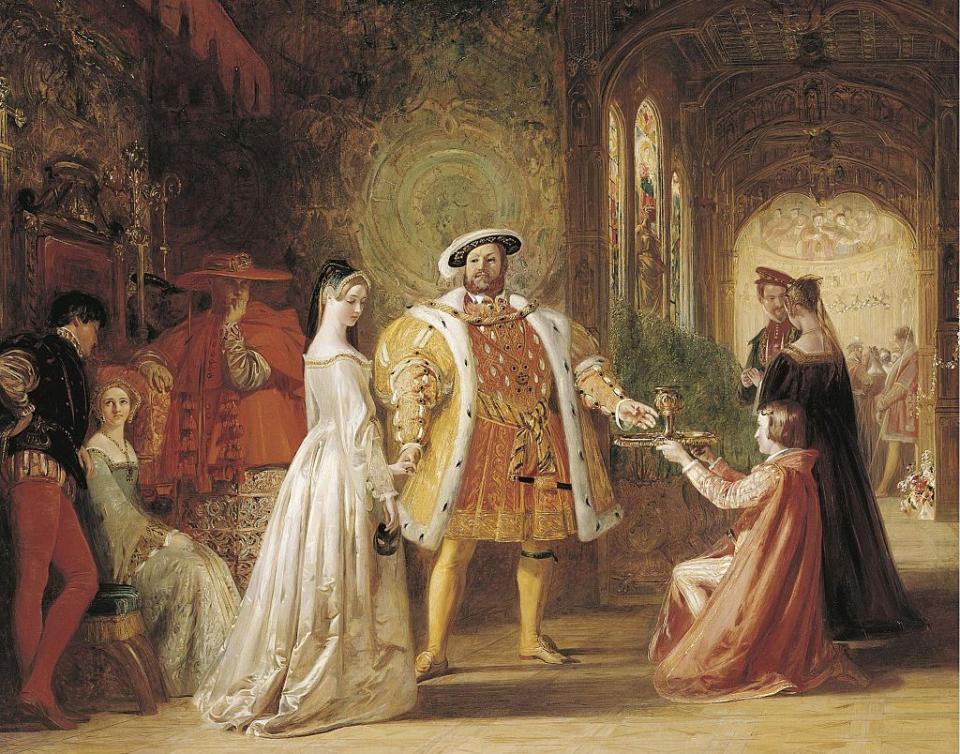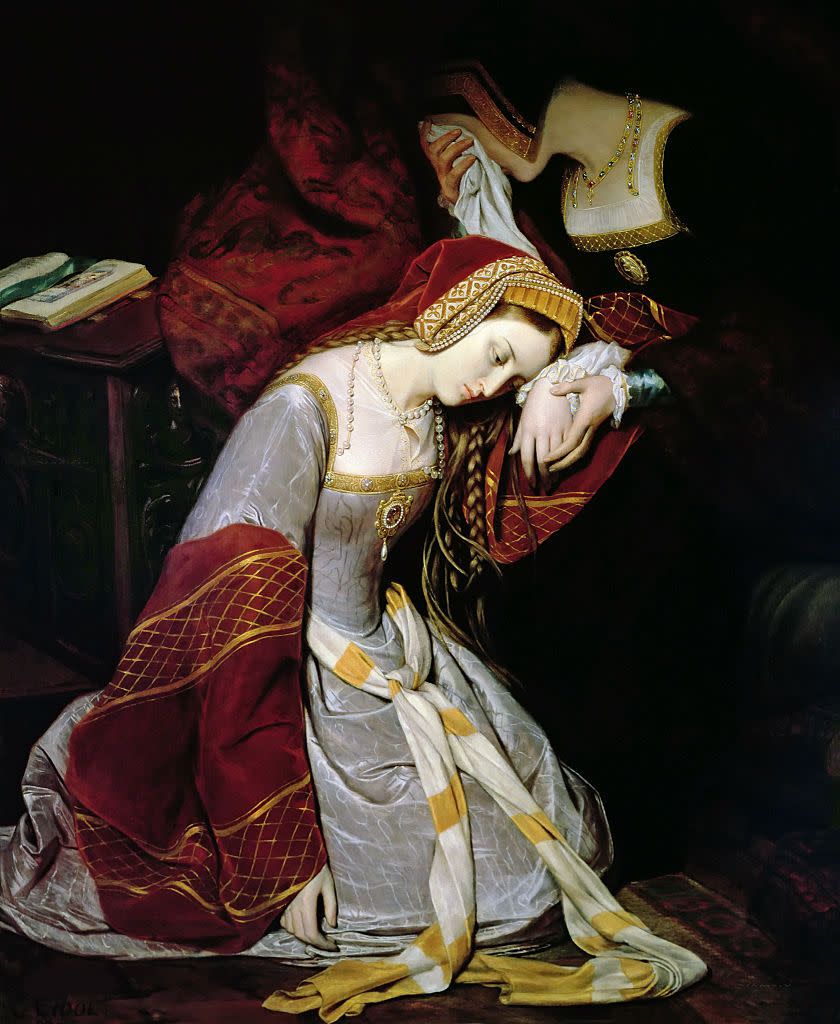Why Are We Still So Fascinated by Anne Boleyn?

- Oops!Something went wrong.Please try again later.
- Oops!Something went wrong.Please try again later.
- Oops!Something went wrong.Please try again later.
- Oops!Something went wrong.Please try again later.
King Henry VIII remains one of England's most famous kings. His nearly four-decade reign marked a period of huge change for the country, and the complications of his line of succession would continue to shake the bedrock of the monarchy for years after his death. And yet, if there's one thing that Henry is best known for in the public mindset today, it's his wives—six of them, to be precise.
Henry's queens have been the subject of movies, books, television shows, and Broadway plays, yet even among their number, one stands out above the rest and continues to captivate our imaginations: Anne Boleyn.
Even in her own time, Anne was a divisive persona, and the years haven't done anything to stop the speculation about her true character and motives. To some, she was a ruthless manipulator, seducing her way into power no matter the cost. To others, a misunderstood young woman; a pawn making the most of a circumstance she found herself trapped in.
With The Boleyns: A Scandalous Family debuting on PBS on August 28 (8 p.m. EST), we're taking a look back at one of history's most famous queens.
Early life
Like many details of her life, the exact year of Anne's birth is unknown, though she was likely born within the first decade of the 1500s. One of Sir Thomas Boleyn, a courtier, and Elizabeth Howard's five children, she spent much of her early childhood at Hever Castle in Kent. As a teen, Anne accompanied Henry VIII’s sister, Mary, to France, where the princess married Louis XII in 1514.
By 1522 Anne had returned to England, where she lived at Henry VIII's court, likely meeting the king during this time. Though few contemporary accounts of Anne remain, she was generally described as a dark-haired, dark-eyed beauty, and she won several suitors, including the poet Thomas Wyatt and Lord Henry Percy. In fact, Cardinal Wolsey actually stepped in at Henry VIII's behest to prevent a marriage between Anne and Percy.

Anne and Henry VIII
As with many things in Anne's life, it's not entirely clear when her romance began with Henry VIII, as a number of undated letters from Henry indicate the king's growing infatuation. (No letters from Anne have survived.) Though the issue is debated, many historians believe that, despite Henry's apparent ardor, he and Anne did not begin a sexual relationship before their marriage.
By the mid-1520s, Henry was apparently becoming disenchanted with his marriage to his first wife, Catherine of Aragon. The couple had produced only one surviving child, a daughter, Mary Tudor, and without a male heir, Henry—whose father, Henry VII, had only won the throne during the War of the Roses—feared for the line of succession. Henry VIII had married Catherine, a Spanish princess and the widow of his brother, on Catherine's assertion that she had Arthur had never consummated their marriage. In time, though, Henry began to doubt her claims, and seems to have suspected that their inability to produce a male heir was a punishment from God.
In 1527, Henry VIII began seeking an annulment from Catharine so that he would be able to marry Anne, and that any children they had together would be legitimate heirs to the throne. Pope Clement VII refused to grant the annulment, but nonetheless, Henry dismissed Catherine in 1531 and secretly married Anne in January 1533 (they did not publicly announced the marriage until Easter.) Henry had the Archbishop of Canterbury declare his marriage to Catherine null and void in May of that year, and Anne was officially crowned queen in June. In September, she gave birth to a daughter, the future Queen Elizabeth I.
Spurred on by his desire to marry Anne, Henry succeeded in getting a series of acts passed that separated England from the religious authority of the Roman Catholic church, and, in 1534, made England's monarch the official head of the Church of England.

Anne's downfall
Despite the passion that had typified their courtship, all was not wedded bliss for Anne and Henry VIII. Anne was not popular with Henry's previous regime of courtiers (the new queen was often accused of being more French than English, with her affinity for French fashions and the French language) and the rise of her family's prominence led to many hard feelings at court.
After the birth of Elizabeth I, Anne suffered a miscarriage in 1534 and gave birth of a stillborn son in January 1536. Their marriage, and the religious reforms that both led to and followed it, has created political tension for Henry, and the persistent lack of a male heir quickly eroded his affections for Anne, and eventually his attentions began to turn to one of her ladies-in-waiting, Jane Seymour.
On May 2, 1536, Anne was committed to the Tower of London on the charges of adultery, conspiring against the king, and even incest with her own brother. Though most historians agree that Anne was likely innocent of the crimes she was accused of, she was nonetheless unanimously convicted by a court of the peerage. She was executed by beheading on May 19, 1536.
Though a crowd was present at the time of her death, reports varied widely on numerous details—in particular, her last words, which have become a source of speculation for centuries. Commonly paraphrased to have said something to the effect of "I have not come here to preach; I have come here to die," contemporary accounts vary wildly in her wording and even the sentiment behind them. Indeed, the only thing that most contemporary accounts seem to agree on? That Anne refused to admit her guilt to the end.
Eleven days after Anne Boleyn's execution, King Henry VIII married Jane Seymour.
You Might Also Like

